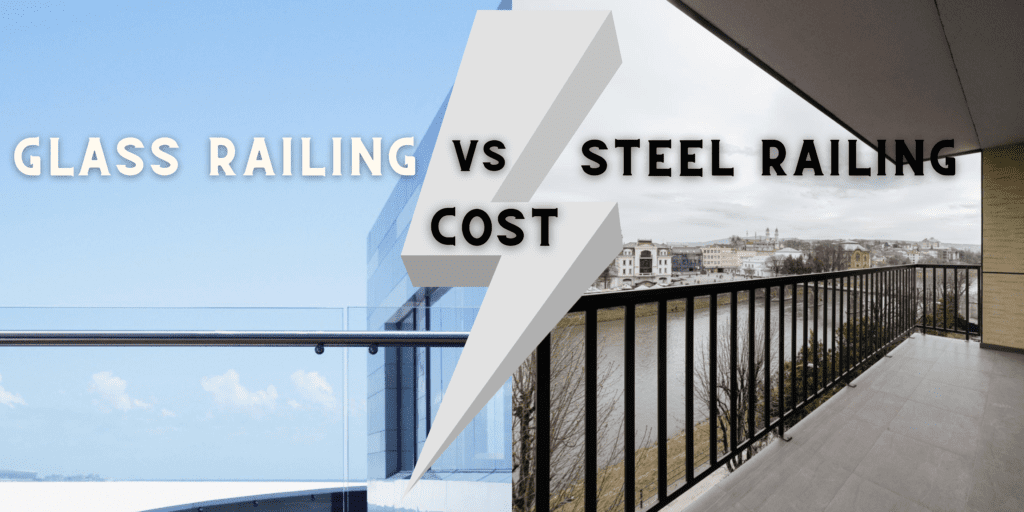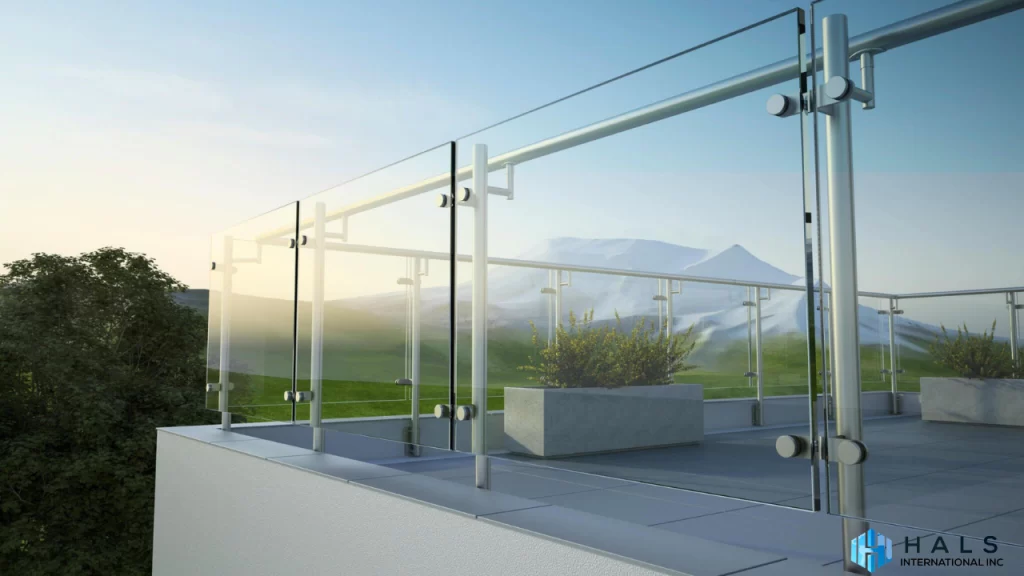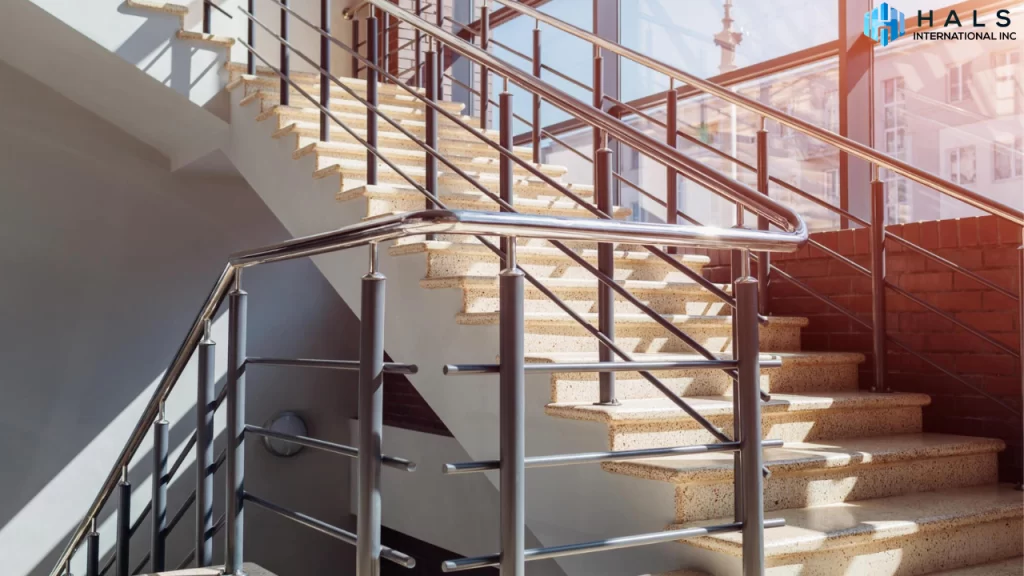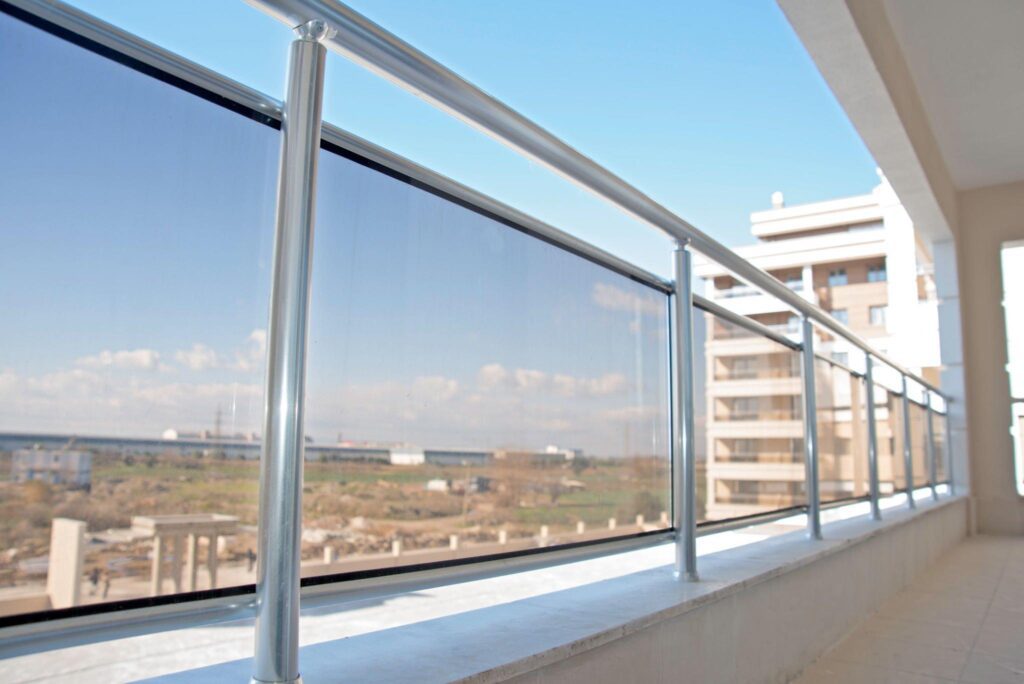
When it comes to improving the look and safety of your space, choosing the right railing system is important. Two famous options that often find themselves in the spotlight are glass railings and steel railings. Each offers unique advantages and beauty, but one factor that often influences the decision-making process is cost. Hals International stands out as one of the top providers of high-quality glass and steel railing solutions because of its cost-effectiveness and superior quality. This article explores cost considerations in comparison to steel railing.
Table of Contents
Glass Railing: A Touch of Elegance
Glass railings are well known for their sleek and modern appearance. They provide an open and clear view, allowing light to flow through and creating a sense of openness. They create an open and airy ambiance, allowing for unobstructed views and an overall feeling of spaciousness. When looking at the cost of glass railings, it’s necessary to consider both upfront expenses and long-term benefits:
- Upfront Cost: Glass railings tend to have a higher upfront cost compared to steel railings. The cost can vary based on factors such as the type of glass used, the design complexity, and the installation requirements.
- Long-Term Benefits: Glass railings are magnificently durable and require minimal maintenance. They are resistant to corrosion, rust, and deterioration, ensuring a longer lifespan than steel railings. Additionally, the unobstructed views they offer can increase the perceived value of your property.

Steel Railing: Strong and Timeless
Steel railings are synonymous with strength and durability. They have a classic and timeless appeal that can complement various architectural styles. They can be customized to match various architectural styles and preferences. The most common steel railing materials are stainless steel or powder-coated steel, which protects them against corrosion and increases their durability. When considering the cost of steel railings, it’s important to weigh the initial investment against the long-term advantages:
- Upfront Cost: Steel railings are generally more budget-friendly upfront compared to glass. The cost can depend on factors such as the type of steel used, the design intricacy, and installation requirements.
- Long-Term Benefits: While steel railings may require occasional maintenance to prevent rust and corrosion, they are highly resilient and can withstand harsh environmental conditions. With proper care, steel railings can serve you well for many years.

If you are looking to purchase high quality Glass Railings you are at right place:
Contact Us For Unique Products and Services
Comparing Cost Factors
Several factors come into play when comparing the cost of glass railing and steel railing. These factors include installation costs, maintenance costs, durability, aesthetics, safety considerations, environmental impact, and noise reduction. Let’s explore each of these factors in detail.
Installation Costs
The installation costs of glass railing and steel railing can vary depending on the complexity of the design, size of the project, and location. Glass railing installation requires precision and expertise due to the fragile nature of glass panels. It may involve additional costs for the purchase and installation of supporting frames. On the other hand, steel railing installation is relatively straightforward, and the cost is primarily determined by the type and quality of steel used.
Maintenance Costs
A glass railing and steel railing have different maintenance requirements, which can impact long-term costs. Glass railings require regular cleaning to maintain their transparency and remove smudges or fingerprints. They may also require occasional inspections to ensure the stability of the frames. On the other hand, steel railings require minimal maintenance, mainly consisting of periodic cleaning and inspections for signs of corrosion or damage.

Durability And Lifespan
Railing systems must be durable when evaluating their long-term cost implications. The lifespan of glass railings can be extended if they are installed properly and maintained. Laminated or tempered glass is resistant to cracks and breaks. Steel railings are known for their strength and can withstand harsh weather conditions. They are less prone to damage and have a longer lifespan than glass railings.
Aesthetics And Design Options
Both glass and steel railings offer a wide range of design options to suit various architectural styles and personal preferences. Glass railings provide a modern and sophisticated look that complements contemporary designs. They can be frameless, frameless, or semi-frameless, allowing seamless integration into your surroundings. On the other hand, steel railings offer versatility in design, allowing for intricate patterns, ornate details, or minimalist styles. They can be customized to match your property’s aesthetic, whether it’s a sleek urban setting or a traditional home.
Safety Considerations
Safety is a primary concern when choosing a railing system, and both glass and steel railings offer reliable protection. Glass railings are designed to be sturdy and shatter-resistant. The use of tempered or laminated glass enhances their safety, as they break into small, rounded pieces instead of sharp shards when damaged. Steel railings, known for their strength, provide a solid barrier that ensures the safety of individuals using the space.
Environmental Impact
The environmental impact is becoming increasingly important when selecting building materials. Glass railings are often made from recycled glass, contributing to sustainability efforts. Additionally, the transparency of glass allows for natural light penetration, reducing the need for artificial lighting and conserving energy. While not as environmentally friendly as glass, steel railings can be recycled and reused, minimizing waste.
Noise Reduction
In specific settings, noise reduction can be a significant factor to consider. Glass railings have the advantage of reducing noise transmission due to their ability to absorb sound vibrations. It can be particularly beneficial in urban environments or areas with high noise levels. Steel railings, while not specifically designed for noise reduction, still provide some sound insulation due to their solid construction.
Conclusion
When comparing the costs of glass railing and steel railing, it’s necessary to consider factors such as installation costs, maintenance costs, durability, aesthetics, safety, environmental impact, and noise reduction. Ultimately, the choice between glass railing and steel railing should align with your budget, design preferences, and long-term goals. With Hals International by your side, you can trust that your investment in railing solutions will not only enhance the beauty of your space but also provide lasting value.
Get the Best Glass Fitting Service at HalsInternational. Contact us today to explore our offerings and make an informed decision that suits your needs and budget.
Frequently Asked Questions
The cost of glass railing and steel railing can vary depending on factors such as design complexity, installation requirements, and location. Generally, glass railing tends to be more expensive due to the cost of materials and installation expertise.
Glass railings require regular cleaning to maintain their transparency and remove smudges or fingerprints. They may also require occasional inspections for stability. Steel railings, on the other hand, have minimal maintenance requirements, mainly consisting of periodic cleaning and inspections for corrosion.
Yes, glass railings are designed with safety in mind. They are made from tempered or laminated glass, which is shatter-resistant and durable. Glass railings also meet safety codes and regulations to ensure the protection of individuals using the space.
Yes, steel railings offer a wide range of customization options. They can be tailored to fit various architectural styles and design preferences, allowing for intricate patterns or minimalist designs.
Glass railings can contribute to sustainability efforts as they are often made from recycled glass. Additionally, their transparency allows for natural light penetration, reducing the need for artificial lighting and conserving energy.
